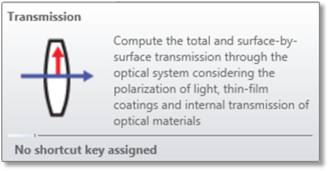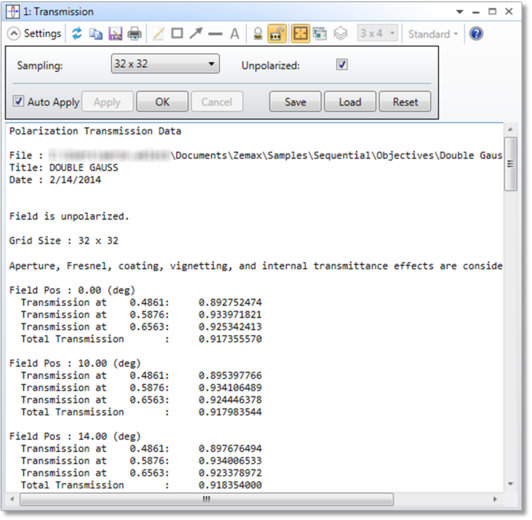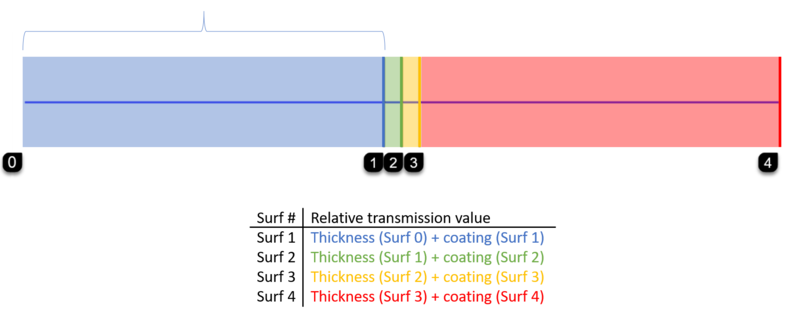Transmission


Computes the integrated and surface by surface transmission through the optical system considering polarization effects.

Jx, Jy Jones electric field. See " Defining the Initial Polarization "
X, Y Phase Phase of the X, Y component of the Jones electric field in degrees.
Sampling Specify the density in the pupil. Larger grid sizes are more accurate, although the computation time increases.
Unpolarized If checked, the electric field definition is ignored and the unpolarized computation is performed.
Discussion
This feature tabulates for each field position and wavelength the integrated transmission of the optical system for the specified polarization. The transmission is computed as a fraction of 100%, with 100% being that transmitted if there were no absorption, reflection, or vignetting losses. The transmission calculation accounts for vignetting factors, vignetting due to apertures or obscurations, ray clipping due to ray trace errors, surface Fresnel or coating losses, and bulk internal transmittance due to absorption.
Also tabulated for each field and wavelength is the relative ("Rel. Tran") and total ("Tot. Tran") transmission of the chief ray.
The relative transmission accounts for transmission of the specific interface, whereas the total transmission accounts for transmission of all surfaces up to and including the specified one. This allows identification of where significant surface losses originate.
When the relative transmission of a surface (surface N) is calculated, it will take into account the transmission of the preceding material, as well as the transmission of a coating at the interface. In other words, the relative transmission will report bulk transmission of the preceding material (surf N-1) and transmission of the current coating (surf N). See the graphic below for more details.
Consider a system with an Object (surf 0) and four additional flat surfaces. The surfaces are numbered below.

For this analysis the relative transmission calculation for surface 1 starts directly after surface 0's interface and ends directly after surface 1's interface.
Relative transmission (surf n) = Material thickness (surf n-1) + Coating (surf n)

See also "Relative Illumination".
Next:


